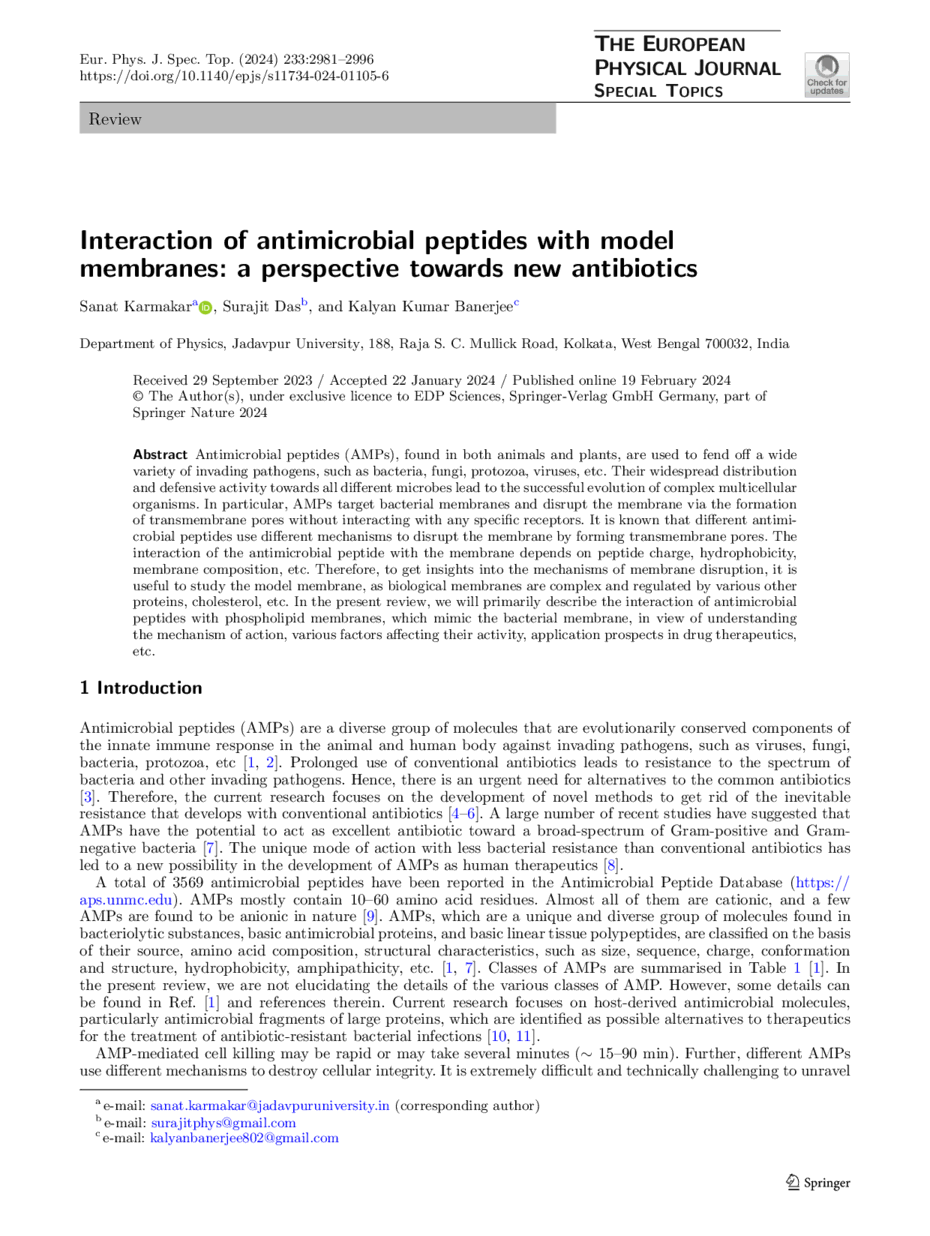https://doi.org/10.1140/epjs/s11734-024-01105-6
Review
Interaction of antimicrobial peptides with model membranes: a perspective towards new antibiotics
Department of Physics, Jadavpur University, 188, Raja S. C. Mullick Road, 700032, Kolkata, West Bengal, India
a
sanat.karmakar@jadavpuruniversity.in
Received:
29
September
2023
Accepted:
22
January
2024
Published online:
19
February
2024
Antimicrobial peptides (AMPs), found in both animals and plants, are used to fend off a wide variety of invading pathogens, such as bacteria, fungi, protozoa, viruses, etc. Their widespread distribution and defensive activity towards all different microbes lead to the successful evolution of complex multicellular organisms. In particular, AMPs target bacterial membranes and disrupt the membrane via the formation of transmembrane pores without interacting with any specific receptors. It is known that different antimicrobial peptides use different mechanisms to disrupt the membrane by forming transmembrane pores. The interaction of the antimicrobial peptide with the membrane depends on peptide charge, hydrophobicity, membrane composition, etc. Therefore, to get insights into the mechanisms of membrane disruption, it is useful to study the model membrane, as biological membranes are complex and regulated by various other proteins, cholesterol, etc. In the present review, we will primarily describe the interaction of antimicrobial peptides with phospholipid membranes, which mimic the bacterial membrane, in view of understanding the mechanism of action, various factors affecting their activity, application prospects in drug therapeutics, etc.
Copyright comment Springer Nature or its licensor (e.g. a society or other partner) holds exclusive rights to this article under a publishing agreement with the author(s) or other rightsholder(s); author self-archiving of the accepted manuscript version of this article is solely governed by the terms of such publishing agreement and applicable law.
© The Author(s), under exclusive licence to EDP Sciences, Springer-Verlag GmbH Germany, part of Springer Nature 2024
Springer Nature or its licensor (e.g. a society or other partner) holds exclusive rights to this article under a publishing agreement with the author(s) or other rightsholder(s); author self-archiving of the accepted manuscript version of this article is solely governed by the terms of such publishing agreement and applicable law.





